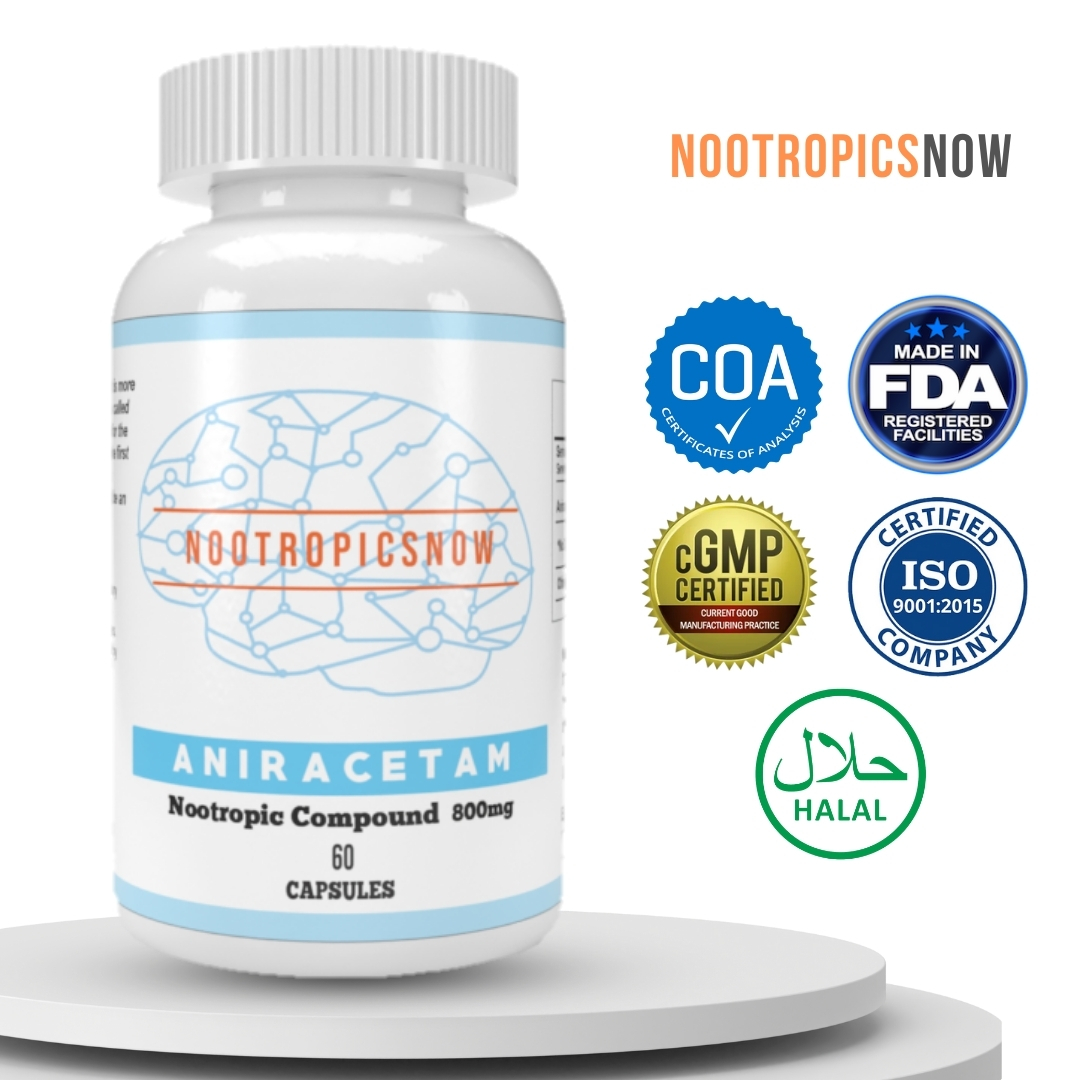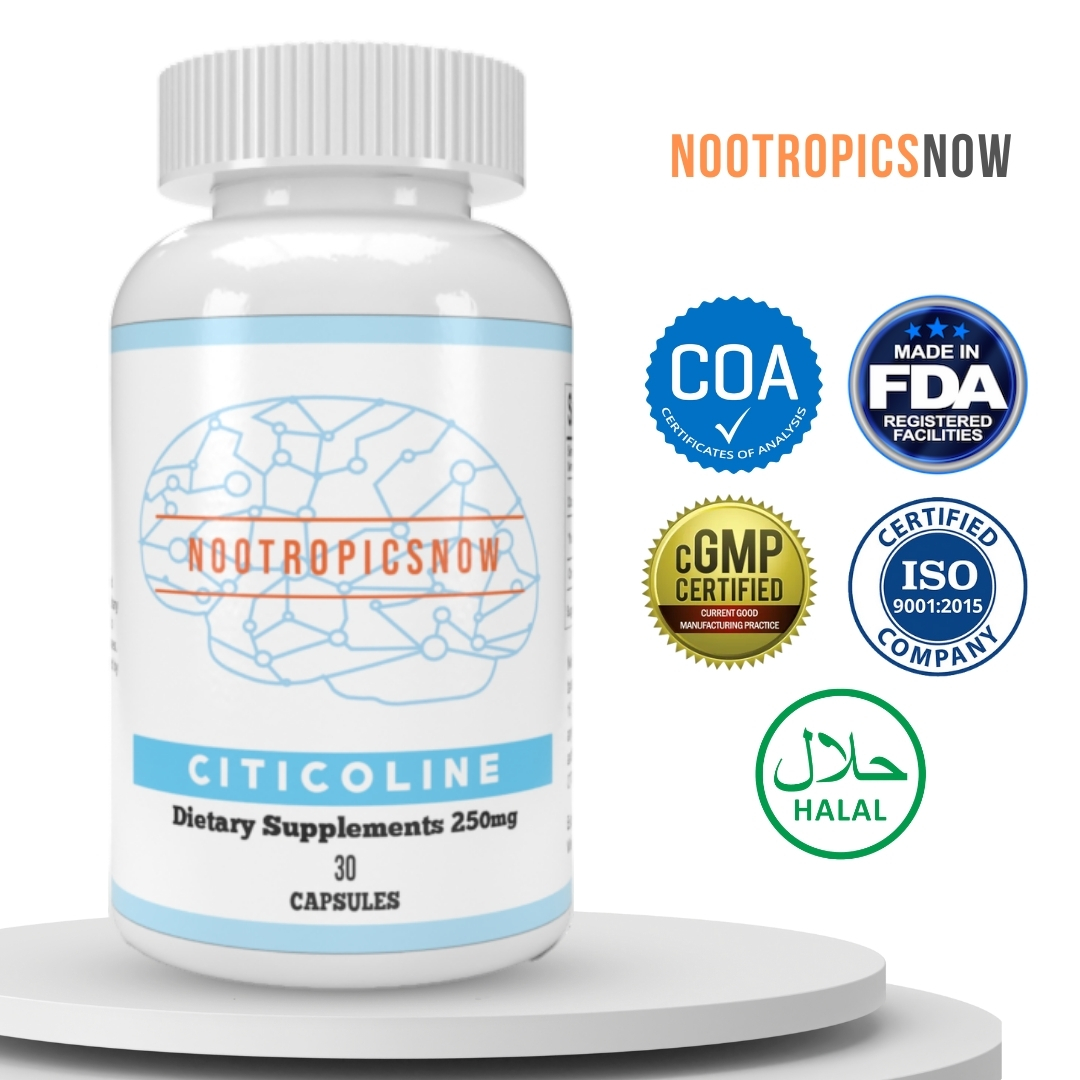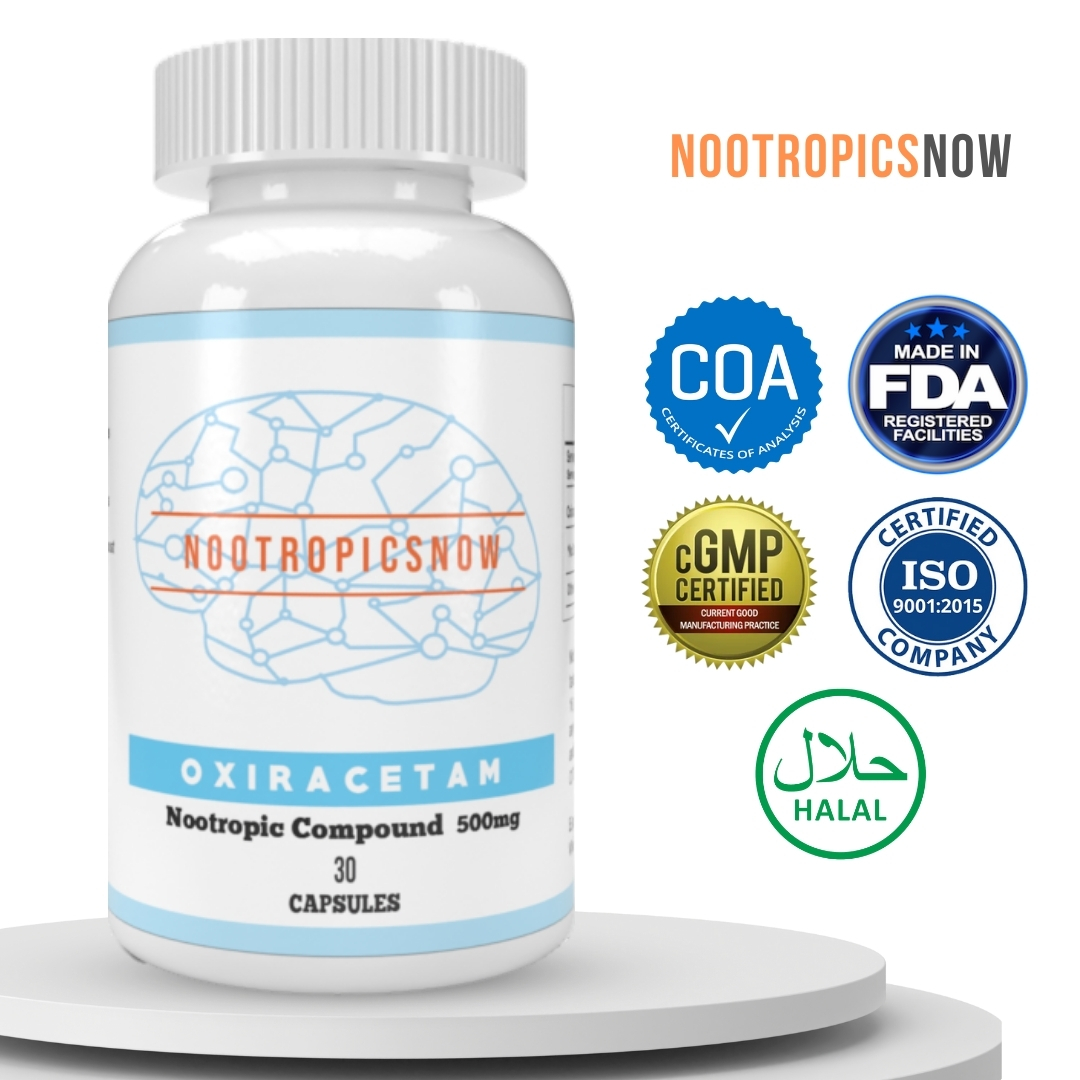Antiracetam: Benefits, Dosage & Uses

Aniracetam: The Complete Guide to Uses, Benefits, and Potential Risks
Aniracetam is a popular synthetic nootropic belonging to the racetam family. Celebrated for its potential to enhance cognitive function, it has garnered attention from students, professionals, and individuals seeking to boost their mental performance. This guide delves into the world of Aniracetam, exploring its mechanisms, benefits, dosages, potential side effects, interactions, and legal status.
What is Aniracetam?

Aniracetam, chemically known as 1-p-anisoyl-2-pyrrolidinone, is a synthetic derivative of piracetam, the first nootropic drug. It was developed in the 1970s by Hoffmann-La Roche, a Swiss pharmaceutical company. Aniracetam is considered more potent than piracetam, with some estimates suggesting it’s several times stronger. As a nootropic, its primary function is to improve cognitive functions, notably memory, focus, and learning ability. Due to its fat-soluble nature, Aniracetam is best absorbed when taken with fats.
How Aniracetam Works: Understanding the Mechanisms
Aniracetam’s effects on the brain are complex and still under investigation. However, current research suggests several key mechanisms of action:
Cognitive Benefits of Aniracetam: What Can You Expect?
Aniracetam offers a range of potential cognitive benefits, which contribute to its popularity as a nootropic. Some of the most commonly reported benefits include:
Dosage and Administration: Finding the Right Balance
The optimal dosage of Aniracetam varies from person to person, depending on factors like individual sensitivity, body weight, and desired effects. However, the generally recommended dosage range is 750mg to 1500mg per day. It’s typically divided into two or three doses throughout the day.
Here’s a general guideline for Aniracetam dosage:
It’s essential to start with a lower dose and gradually increase it to assess tolerance and determine the optimal dosage. Aniracetam is fat-soluble, so taking it with a source of healthy fats, such as nuts, avocado, or fish oil, can significantly improve its absorption and effectiveness.
Potential Side Effects: What to Watch Out For
Aniracetam is generally considered safe when taken at recommended dosages. However, some individuals may experience side effects, especially when starting or taking higher doses.
Common side effects of Aniracetam include:
These side effects are typically mild and transient. If you experience any persistent or severe side effects, discontinue use and consult with a healthcare professional.
Drug Interactions: What to Consider
Aniracetam may interact with certain medications or supplements. It’s crucial to be aware of potential interactions before taking Aniracetam, especially if you are already taking other medications.
Potential interactions with Aniracetam include:
It’s essential to consult with a healthcare professional before taking Aniracetam, especially if you are taking other medications or have any underlying health conditions.
Legal Status and Availability: Where Can You Buy Aniracetam?
The legal status of Aniracetam varies by country. In the United States, Aniracetam is not approved by the FDA for use as a drug, but it is legally available as a dietary supplement. This means that it can be purchased and sold without a prescription.
In some other countries, Aniracetam may be classified as a prescription drug or may not be available at all. It’s important to check the local regulations regarding Aniracetam before purchasing or using it.
Aniracetam is widely available online from various nootropic vendors and supplement retailers. When purchasing Aniracetam, it’s crucial to choose reputable sources to ensure product quality and authenticity. Look for vendors that provide third-party testing and certificates of analysis to verify the purity and potency of their products.

View Product
Stacking Aniracetam: Synergistic Combinations
Many nootropic users experiment with stacking Aniracetam with other compounds to enhance its effects or address potential side effects. Some popular Aniracetam stacks include:

View Product
Before stacking Aniracetam with other compounds, it’s essential to research potential interactions and start with lower doses to assess tolerance.
Aniracetam vs. Other Racetams: What’s the Difference?
Aniracetam belongs to the racetam family of nootropics, which share a similar chemical structure and mechanism of action. Other popular racetams include piracetam, oxiracetam, pramiracetam, and phenylpiracetam.
Here’s a brief comparison of Aniracetam with other racetams:
Choosing the right racetam depends on individual needs and preferences. Aniracetam is a good option for those seeking a balanced cognitive enhancement profile with mood-boosting and anxiety-reducing effects.
Lifestyle Considerations for Optimal Nootropic Results
While nootropics like Aniracetam can provide cognitive benefits, they are not a substitute for a healthy lifestyle. To maximize the effects of Aniracetam and support long-term cognitive health, it’s essential to prioritize the following:
The Future of Aniracetam Research
Research on Aniracetam continues to evolve. Ongoing studies are exploring its potential therapeutic applications for various neurological and psychiatric conditions. Future research may focus on:
As research progresses, the understanding of Aniracetam’s mechanisms and benefits will deepen, potentially leading to new therapeutic applications.
Responsible Use of Aniracetam: A Final Word
Aniracetam is a valuable nootropic with the potential to enhance cognitive function and improve overall well-being. However, it’s important to approach its use responsibly and with realistic expectations.
Before taking Aniracetam, consult with a healthcare professional to discuss potential risks and benefits. Start with a lower dose and gradually increase it to assess tolerance. Monitor for any side effects and adjust the dosage or discontinue use if necessary.
Remember that nootropics are not a magic bullet for cognitive enhancement. They are most effective when combined with a healthy lifestyle and a commitment to lifelong learning and cognitive stimulation.
Aniracetam: Unlocking Cognitive Potential
Aniracetam, a member of the racetam family of nootropics, offers a potential pathway to enhanced cognitive function. This synthetic compound, structurally similar to piracetam, is known for its purported ability to improve memory, focus, and overall mental performance. Unlike some other nootropics, aniracetam is reported to have anxiolytic properties, making it a potentially appealing option for individuals seeking cognitive enhancement without the anxiety sometimes associated with stimulants.
Understanding Aniracetam: A Deeper Dive
Aniracetam is a fat-soluble molecule, meaning it readily crosses the blood-brain barrier, leading to faster absorption and utilization. Once in the brain, it interacts with various neurotransmitter systems, influencing cognitive processes. Its effects are often described as smoother and more focused than those of piracetam.
Chemical Structure and Properties
Aniracetam’s chemical name is 1-p-anisoyl-2-pyrrolidinone. Its molecular formula is C12H13NO3, and its molar mass is 219.24 g/mol. The presence of the anisoyl group differentiates it from piracetam, contributing to its increased lipophilicity and potency. This allows it to be absorbed more efficiently.
Origin and History
Developed in the 1970s by Roche, aniracetam was initially studied for its potential in treating age-related cognitive decline and other neurological disorders. It has since gained popularity as a cognitive enhancer among biohackers and individuals seeking improved mental performance.
How Aniracetam Works: Exploring the Mechanism of Action
Aniracetam’s precise mechanism of action is complex and not entirely understood. Nevertheless, research suggests that it affects several key neurotransmitter systems in the brain, contributing to its cognitive-enhancing effects.
Modulation of Acetylcholine
Aniracetam is believed to enhance the release and activity of acetylcholine, a neurotransmitter crucial for memory, learning, and attention. It does this by binding to and stimulating acetylcholine receptors. By increasing acetylcholine levels, aniracetam can enhance synaptic transmission and improve cognitive performance.
Influence on Glutamate Receptors
Glutamate is the primary excitatory neurotransmitter in the brain, playing a vital role in synaptic plasticity and learning. Aniracetam is believed to modulate AMPA receptors, a type of glutamate receptor, enhancing synaptic transmission and improving cognitive flexibility. This modulation is believed to be key in aniracetam’s cognitive boosting effects.
Impact on Dopamine and Serotonin
Aniracetam also influences dopamine and serotonin, neurotransmitters involved in mood regulation and motivation. It’s believed to enhance the release of these neurotransmitters, which could contribute to its reported anxiolytic and mood-boosting effects.
Potential Benefits of Aniracetam: What the Research Shows
While research on aniracetam is ongoing, existing studies suggest it may offer a range of potential cognitive benefits. These benefits may vary depending on individual factors and dosage.
Memory Enhancement
Aniracetam is often touted for its memory-enhancing properties. Studies have shown it can improve both short-term and long-term memory, as well as recall speed. Some research suggests it may be particularly effective in improving memory in individuals with age-related cognitive decline.
Improved Focus and Concentration
Many users report that aniracetam helps improve focus and concentration. By modulating neurotransmitter activity, it may reduce mental fatigue and improve the ability to sustain attention.
Enhanced Learning Capacity
Aniracetam’s impact on acetylcholine and glutamate neurotransmitters can enhance learning capacity. Increased levels of acetylcholine helps improve the transfer of information from short term to long term memory. Glutamate can improve the speed of learning.
Mood Enhancement and Anxiolytic Effects
Unlike some other nootropics, aniracetam is often reported to have anxiolytic properties. It may help reduce anxiety and improve mood, possibly due to its influence on dopamine and serotonin.
Enhanced Sensory Perception
Some users report that aniracetam enhances sensory perception, particularly visual and auditory experiences. Colors may appear more vibrant, and sounds may become more distinct.
Potential Neuroprotective Properties
Some research suggests that aniracetam may have neuroprotective properties, protecting brain cells from damage caused by oxidative stress and other factors. This potential could contribute to its long-term cognitive benefits.
Aniracetam Dosage and Administration: Finding the Right Balance
Finding the right dosage of aniracetam is crucial to maximizing its benefits while minimizing potential side effects. It’s essential to start with a low dose and gradually increase it until the desired effects are achieved.
Recommended Dosage Range
The typical dosage range for aniracetam is between 750 mg and 1500 mg per day, divided into two or three doses. Many users begin with 750 mg per day. Taking smaller doses spread out during the day is more effective to keep a steadier concentration.
Timing of Administration
Aniracetam is fat-soluble, so it’s best taken with meals containing fats to enhance absorption. Dividing the daily dose into smaller portions and taking them throughout the day can help maintain stable blood levels and consistent effects.
Cycling Aniracetam
To prevent tolerance, some users recommend cycling aniracetam. For example, you might take it for several weeks, followed by a week or two of abstaining. This may help prevent desensitization.
Potential Side Effects and Precautions: Staying Safe
While aniracetam is generally considered safe, it can cause side effects in some individuals. It’s essential to be aware of these potential side effects and take appropriate precautions.
Common Side Effects
Common side effects of aniracetam include headaches, anxiety, insomnia, and gastrointestinal distress. These side effects are usually mild and temporary.
Less Common Side Effects
Less common side effects may include dizziness, confusion, and skin rashes. If you experience any severe or persistent side effects, discontinue use and consult with a healthcare professional.
Precautions and Contraindications
Aniracetam should be used with caution in individuals with pre-existing medical conditions, particularly those affecting the liver or kidneys. It’s also contraindicated in individuals who are pregnant or breastfeeding due to a lack of safety data.
Interactions with Other Substances
Aniracetam may interact with certain medications, particularly those that affect the liver or brain. It’s essential to inform your healthcare provider about all medications and supplements you’re taking before using aniracetam.
Stacking Aniracetam: Synergistic Combinations
Many users explore stacking aniracetam with other nootropics to enhance its effects. Certain combinations may offer synergistic benefits, improving cognitive function more effectively than aniracetam alone.
Common Stacks
Considerations for Stacking
When stacking aniracetam with other nootropics, it’s essential to start with low doses and gradually increase them. This allows you to assess your individual response and minimize the risk of side effects.
Where to Buy Aniracetam in the Philippines
Acquiring aniracetam in the Philippines requires some research and caution. Due to regulatory variations, availability can fluctuate.
Online Retailers
Several international online retailers specializing in nootropics offer aniracetam and ship to the Philippines. These retailers often provide detailed product information and customer reviews. Check product reviews to make sure that the product is safe.
Local Vendors
Some local health stores or specialty supplement shops may carry aniracetam. In addition, vendors on popular e-commerce platforms like Lazada and Shopee sometimes sell aniracetam or products containing it.
Considerations for Purchasing
When buying aniracetam, it’s essential to choose reputable vendors and verify product quality. Look for third-party testing and certifications to ensure purity and potency. Compare prices from different sources to find the best deal.
Legal Status of Aniracetam in the Philippines
The legal status of aniracetam in the Philippines is somewhat ambiguous. Aniracetam is not a controlled substance. However, the sale of nootropics, including aniracetam, may be subject to regulations governing food supplements and drugs. Always consult with a legal expert to know more about the current status.
User Experiences and Reviews: What People Are Saying
Real-world experiences with aniracetam can provide valuable insights. Numerous online forums and communities discuss aniracetam, offering anecdotal evidence and personal reviews.
Common Themes
Important Considerations
It’s essential to approach user reviews with a critical eye. Individual experiences can be influenced by factors such as dosage, genetics, lifestyle, and expectations.
Research and Studies on Aniracetam: A Scientific Perspective
While anecdotal evidence is helpful, scientific research provides a more objective assessment of aniracetam’s effects. Numerous studies have investigated its potential benefits in various contexts.
Key Findings
Limitations
It’s essential to acknowledge the limitations of existing research. Some studies are small, and results may not be generalizable. Further research is needed to fully understand aniracetam’s effects and long-term safety.
Aniracetam vs. Other Racetams: A Comparative Analysis
Aniracetam is just one member of the racetam family of nootropics. Comparing it to other racetams can help you make an informed decision about which compound is best suited for your needs.
Key Differences
Choosing the Right Racetam
The best racetam for you will depend on your individual needs and preferences. Consider your goals, potential side effects, and interactions with other substances.
Responsible Use of Aniracetam: Ethical Considerations
Nootropics can be a powerful tool. Using them responsibly and ethically is paramount.
Cognitive Enhancement and Fairness
Using nootropics to gain an unfair advantage can raise ethical concerns. It’s essential to consider the impact of cognitive enhancement on fairness and equality.
Transparency and Disclosure
Being transparent about your use of nootropics is crucial, particularly in academic or professional settings. Disclosure can help maintain trust and avoid potential conflicts.
Long-Term Effects and Sustainability
The long-term effects of nootropics are not fully understood. It’s essential to consider the sustainability of using cognitive enhancers over extended periods.
The Future of Aniracetam Research: What’s Next?
Research on aniracetam is ongoing, and future studies may provide further insights into its mechanisms of action and potential benefits.
Emerging Areas of Interest
Potential Applications
Conclusion: Is Aniracetam Right for You?
Aniracetam offers a potentially powerful tool for cognitive enhancement. However, it’s essential to approach it with caution and consideration. Research the product carefully and consult with your healthcare provider.
If you decide to use aniracetam, start with a low dose, monitor your response closely, and be mindful of potential side effects. With responsible use and a thoughtful approach, aniracetam may help unlock your cognitive potential.





